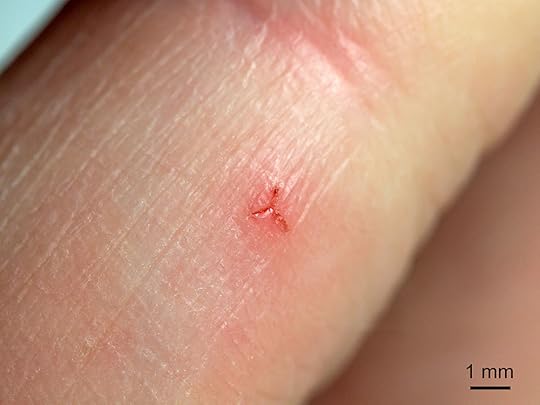Ripley Entertainment Inc.'s Blog, page 375
November 27, 2017
The Extinct Tasmanian Tiger: a Carnivorous Marsupial Ghost
Featured in Ripley's Believe It or Not!

The Tasmanian tiger, or Thylacine, was the apex predator of Australia for a time, native to the islands of Tasmania and New Guinea, as well as the mainland. Despite being discovered by the British when they arrived to settle Australia and being taken into captivity, the Tasmanian tiger is incredibly mysterious and wasn’t well studied before going extinct.
A pouch-laden marsupial like the kangaroo, Tasmanian tigers are a little backward—literally. Their pouch opened from the back instead of the front and appeared on both male and female tigers. It got its name from the stripes along its back, though it is entirely unrelated to ordinary tigers.
Tiger Hunting
Though the species was discovered in 1808, it seems that the poor Tasmanian tiger was already struggling to survive. It had become near-extinct everywhere but Tasmania by this time. Adapted to survive in the food-scarce jungles, these tigers prowled the underbrush eating anything they could get their jaws on, including kangaroos, wombats, bandicoots, and emus.

Biologists believe this newspaper photo was staged using a dead Thylacine.
The species proved an immediate threat to the interests of settlers and was superstitiously thought to be a blood drinker, sucking the blood from farmer’s sheep. The added competition of dingoes on the island, as well as the arrival of diseases carried by dogs severely threatened Thylacines. This would-be chupacabra became the target of organized hunts, and possibly a smear campaign that used a staged photo to coerce settlers into pursuing the creatures.
Bounties paying up to £1 per tiger head were issued by the Tasmanian government, and the last wild Thylacine was shot in 1930.

The last wild Tasmanian tiger.
Life in Captivity
A few of the Tasmanian tigers had been placed in zoos, but they didn’t fare well, getting sick, and sometimes refusing to eat. Only one attempt to breed them in captivity was successful. Transferring the animals to zoos outside the continent was difficult and expensive, and some even ended up in sideshows and traveling menageries.
The last tiger died in captivity at the Hobart Zoo in 1936. Nicknamed “Benjamin,” it is believed he died of neglect, being locked outside of his shelter during swelteringly hot days and freezing cold nights.

Benjamin in captivity.
The Hunt for the Ghost Tiger
Though Benjamin is recognized officially as the last Tasmanian tiger, rumors of their presence and unsubstantiated sightings persisted in Tasmania for another 50 years. The hunt for the Tasmanian tiger since its extinction has been almost as fervent as the hunt that led to its destruction.
Now regarded as a cryptid alongside the Loch Ness Monster and Himalayan Yeti, Tasmanian tiger sightings and photos never pass the muster of thorough examination. Media magnate Ted Turner has even offered a $100,000 reward for proof the animal still lives, spurring a generation of hunters searching for an elusive Tasmanian tiger. They continue their search to this day, and “sightings” are reported every year.
Source: The Extinct Tasmanian Tiger: a Carnivorous Marsupial Ghost
CARTOON 11-27-2017
November 26, 2017
CARTOON 11-26-2017
November 25, 2017
Coffee Powered Buses and Thanksgiving
Featured in Ripley's Believe It or Not!

[November 19-25, 2017] Coffee powered buses, a Nigerian bobsled team, and the presidential turkey pardon.
5. Coffee-Powered Buses
Pollution has long been a problem for the city air of London, but a new fuel source has just become available for London’s famous double-decker buses. Since coffee seems to be so good at keeping the people who ride them going, why not try feeding it to the buses? Using coffee grounds, 1,580 gallons of bus fuel has been refined and could power one bus for up to a year.

4. Nigerian Bob-sled Team
It’s been 30 years since the unexpected appearance of a bobsledding team from the snowless country of Jamaica, but now another unlikely country has entered the winter Olympics: Nigeria. The women’s bobsledding team will be the first to represent not just their nation, but the entire continent of Africa in the 2018 PyeonChang Olympics.
AMAZING DAY ACCOMPLISHED! Check out this beautiful start! NAIJA STAND UP!
CARTOON 11-25-2017
November 24, 2017
Leech Collectors and the Leech Craze of the 1800s
Featured in Ripley's Believe It or Not!

You thought your job was tough? Imagine being a medicinal leech collector in the 1800s, possibly one of the least awesome professions in modern history.
Leeches have been used medicinally for thousands of years—possibly as far back as Ancient Egypt. They were used to treat a wide range of conditions by slowly sucking the blood from patients, and it was believed for many years that this form of bloodletting could never be overdone—although we now know that this is painfully untrue.

A physician administers leeches.
The Leech Craze
Leech use went on in a mild fashion for centuries until the French physician François-Joseph-Victor-Broussais (1772-1838) claimed most diseases were a product of local inflammation and could be cured through bloodletting. As a result, bloodletting became a catchall solution for every possible ailment, and the leech craze of the 19th century was born.
As the leech trade boomed, leeches were shipped from Germany to America by the tens of thousands. England had to start importing them from France by the mid-1800s, as their own leech stocks weren’t large enough to supply its doctors.

The Leech Collectors’ Dilemna
Leech collectors were usually poorer citizens who didn’t make much money. In addition, they were often women. These individuals would wade into ponds, bogs, and marshes and attract leeches with two kinds of bait: the legs of old horses that were too worn down to be of much use any longer, or, their own legs. Naturally, the second method was less expensive and more popular.

Leech bite./CC Christian Fischer
Leech collectors actually had to let the leeches suck on them for twenty minutes or longer before they could pull them off, as it was easier to dislodge the leech once it was fat with blood. However, the wound might continue bleeding for several hours afterward, which was good for attracting more leeches but not so good for the leech collector. In fact, most individuals in this position suffered from serious illnesses they caught from the leeches as well as severe blood loss at the end of a hard day’s work.
The Decline of the Leech Craze
Eventually, the leech craze died out. They became too expensive to ship, too scarce due to over farming to find, and medically obsolete in the face of new science that questioned the medical merits of bloodletting. The population of the hirudo medicinalis—the only leech species in Great Britain that actually sucks human blood—dwindled considerably as a result of this leech craze and was even thought to have been extinct for many years before it was rediscovered in the 1970s.
Medicinal leeches are still used today to treat certain issues, and in 2004, the FDA approved them as medical devices. To this day, leeches are used to remove blood from congested wounds, such as severed finger reattachments. The small number of leeches used today, however, are farmed, rather than collected.
CARTOON 11-24-2017
November 23, 2017
Or Not: Flush Direction Changes Depending on the Hemisphere
Featured in Ripley's Believe It or Not!

Or Not
In today’s world many misconceptions have been perpetuated—becoming modern day “facts”—when, in reality, myths and hearsay have taken over. Sorry to burst your bubble, but in this weekly column, Ripley’s puts those delusions to the test, turning your world upside down, because you can’t always…Believe It!
Today: Toilets don’t flush depending on the hemisphere.
Flush Direction
It has been rumored for decades that the toilets in the southern hemisphere flush clockwise as opposed to their Northern hemisphere counterparts that flush counter-clockwise. While it may have been difficult to observe the flushing of a toilet in your opposite hemisphere before the internet became so popular, today a simple YouTube search will allow you to watch countless toilets flushing in places all over the world.

The Coriolis Effect
Most people inaptly use the Coriolis Effect to give scientific basis for the proposed toilet spin. The effect, which is indeed real, and very scientific, basically posits that the spinning of the spherical Earth has an impact on other spinning objects. When something spins on the surface of the Earth, the different widths of the Earth from North to South (because it’s a sphere shape) means that different areas of the planet are moving at different speeds.
On something large like a hurricane or typhoon, this can cause a rotational pattern that affects the direction they spiral. Storms in the Northern hemisphere, for example, spin counter-clockwise and spin clockwise in the Southern.

Imagine if you threw a ball from the South pole to someone at the Equator for example. As the ball traveled, the Earth would continue spinning, and from your point of view, it would look as though the arc of your throw curved.
Brain Drain
If this force is strong enough to affect storms, surely, it’s strong enough to affect a small drain? Wrong. Because a drain doesn’t cover the large cross-section of the Earth’s surface like a hurricane would, it is only minutely impacted by the Coriolis Effect.
Just like in the earlier example, if you throw a ball to someone who is not so far away as the equator to the South pole, you’ll observe almost no curve due to the rotation of the Earth.

The flow of water down a toilet is much more affected by the symmetry of the drain and the turbulence of the water than the Coriolis Effect. Toilet manufactures also angle the jets in a toilet to purposefully create a spiraling direction so that the water can more effectively move waste through pipes.
Source: Or Not: Flush Direction Changes Depending on the Hemisphere
CARTOON 11-23-2017
November 22, 2017
The Fascinating Art of Butter Sculpting
Featured in Ripley's Believe It or Not!

Every year across North America, state fairs present something mysterious, awe-inspiring, and very fattening: life-sized sculptures made from butter.

Bald eagles, Elvis Presley, Harley-Davidson motorcycles, and even Da Vinci’s Last Supper have been rendered from coagulated milk fat.
No Margarine for Error
The first butter sculpture in America appeared at a fair in 1876, during America’s centennial. The sculpture had to be kept cool by buckets of ice that were constantly replenished.

The artist behind the rise of butter portraits was Pamela H. Simpson. After using butter molds as a marketing tactic to sell her farm’s butter, she soon began making a living sculpting portraits of people out of butter. Among her clients was none other than Mary, Queen of Scots.
Udderly Cool
One such uncanny sculpture presented year after year is a cow itself made from the product of its udders. A life-sized cow sculpture requires 600 pounds of butter—which is actually much less than the usual 1,000 plus pounds a real cow weighs.
Ripley Entertainment Inc.'s Blog
- Ripley Entertainment Inc.'s profile
- 52 followers









